May 24, 2025 | 16:28 GMT +7
May 24, 2025 | 16:28 GMT +7
Hotline: 0913.378.918
May 24, 2025 | 16:28 GMT +7
Hotline: 0913.378.918
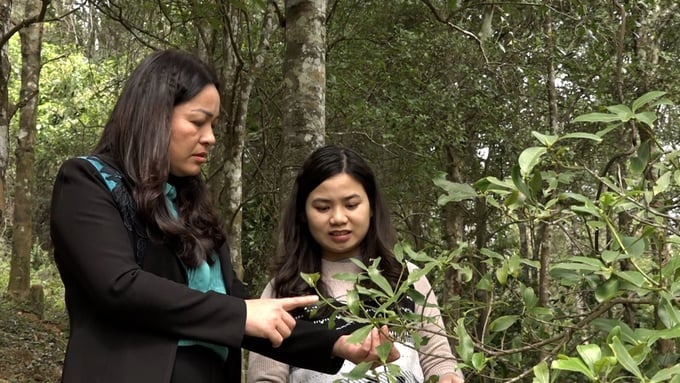
Head of Binh Gia district's Department of Agriculture and Rural Development inspecting the organic star anise production areas. Photo: Nguyen Thanh.
Lang Son province currently has more than 43,000 hectares of star anise production area, which account for approximately 70% of the total star anise production area in the country. Over 28,000 hectares of this area are under stable harvest, producing between 7,500 and 16,000 tons of dried star star anise every year, with an estimated value of 1,700 billion Vietnamese Dong annually. The potential and economic value of the star anise plant are substantial.
However, due to traditional harvesting practices and a lack of investment in the nurturing process, the local star anise plants have weakened, making them susceptible to diseases and resulting in limited yield. As a result, this has significantly affected the income and livelihood of local communities in star anise production areas.
In response to practical needs in star anise production, Lang Son province's specialized agencies have implemented various solutions to revitalize the star anise plants, extend the harvesting period, increase productivity, improve product quality, and meet the requirements for processing and export.
Hoang Van Thu is one of the two communes in Binh Gia district, Lang Son province to implement the model of "Applying various technical solutions for the revival and development of star anise plants," as launched by the district's Department of Agriculture and Rural Development. Under the model, 30 households in the commune have participated in the implementation with a 40-hectare star anise production area .
The participating households have received knowledge transfer on star anise planting and nurturing processes and have been provided with support for organic fertilizers. After three years of applying the organic microbial fertilizer and pest control measures, the results have been remarkably positive. The star anise plants have shown improved growth with lush green leaves and reduced susceptibility to diseases. As a result, the model has markedly increased the local yield of star anise.
Mr. Ly Van Chien from Hoang Van Thu commune shared: "After being selected for the experimental model, we started using organic fertilizers on our star anise farm, which doubled the plant's productivity. The star anise plants are now greener, stronger, and producing a higher quantity of fruits of superior quality."
The star anise plants, after receiving organic microbial fertilizer, have shown a reduction in flower and fruit drop, which has improved fruit appearance, increased fruit weight, and contributed to enhanced productivity, quality, and economic value of star anise products.
The star anise yield in the aforementioned model has increased by 20 to 30% due to the application of organic fertilizers at different fruit-bearing stages. The percentage of plants with flowers and fruits has exceeded 60%, with each plant yielding 32.5 kilograms of star anise flowers, resulting in an estimated flower yield of 1.3 tons per hectare.
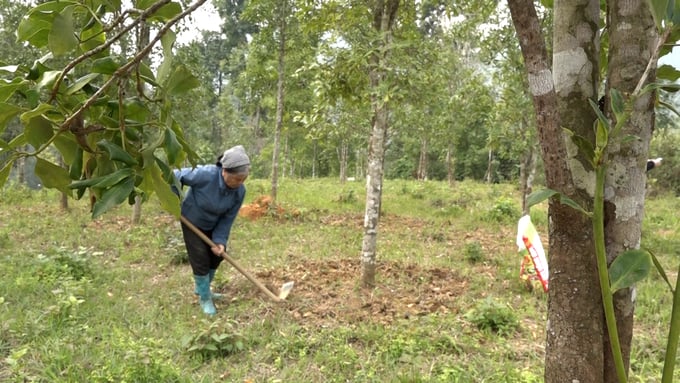
Star anise farmers are placing significant emphasis on utilizing organic fertilizers and adhering to organic standards in their production practices. Photo: Nguyen Thanh.
In addition to improving the nurturing process and increasing the yield and quality of star anise flowers, Lang Son province is developing and expanding its star anise production areas according to organic and sustainable standards. Most notably, Van Quan district currently has 400 hectares of organic star anise production areas.
Lang Son province's Department of Crop Production and Plant Protection has supported the implementation of four organic star anise production models and organized four technical training courses for households participating in these models since 2019.
The government-supported models, in combination with the adoption of technical solutions for star anise production, have been slowly replicated and led to the establishment of organic star anise production areas. As a result, the models have enhanced economic efficiency and produce star anise which are qualified for processing and export. Lang Son province currently has 720 hectares of organic star anise production area in the districts of Chi Lang, Van Quan, Binh Gia, and Bac Son.
Ms. Phung Thi Kim Khanh, Deputy Director of Lang Son province's Department of Crop Production and Plant Protection, noted that farmers' awareness regarding organic star anise production has been improving.
"Farmers have become more focused on nurturing and fertilizing star anise plants. Additionally, they have acquired knowledge regrading the organic production process as well as nurturing standards, so they can boost the growth of star anise plants, limit harmful pests, and enhance the quality of star anise. This effort also facilitates the expansion of organic star anise production areas, with the aim of meeting export requirements to major markets around the world and increasing the value of Lang Son's star anise products," emphasized Ms. Phung Thi Kim Khanh.
Lang Son province's geographical indication for star anise has been recognized and protected within the European Union since 2020. The star anise market in the province is currently thriving, and asserting its reputation in both domestic and international markets. Organic star anise production not only enhances the value of the product but also ensures safety for consumers while meeting processing and export requirements.
Translated by Nguyen Hai Long
![Advanced mariculture – an inevitable trend: [1] Moving offshore](https://t.ex-cdn.com/nongnghiepmoitruong.vn/608w/files/phucpm/2025/05/18/0252-2436-nuoi-bien-6-162148_783.jpg)
(VAN) Mariculture using advanced technology and moving offshore is an inevitable trend, as nearshore areas increasingly reveal limitations.
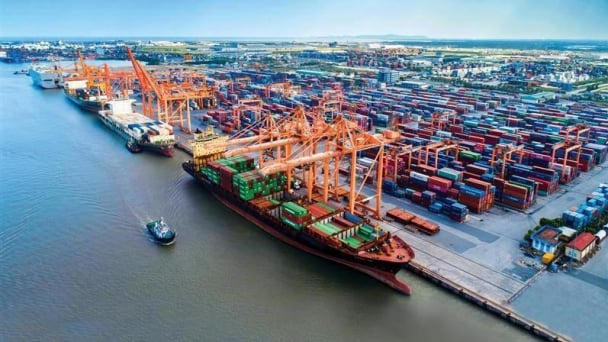
(VAN) South Korea is currently the second-largest investor in Hai Phong in terms of the number of projects (186 projects) and the largest in terms of total registered investment capital, reaching USD 14.2 billion.
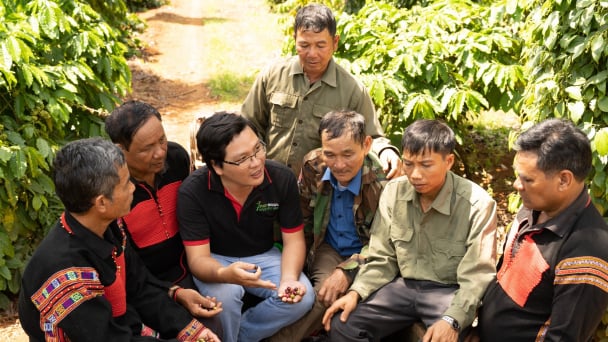
(VAN) As consumers become more environmentally conscious, legal regulations grow increasingly stringent...
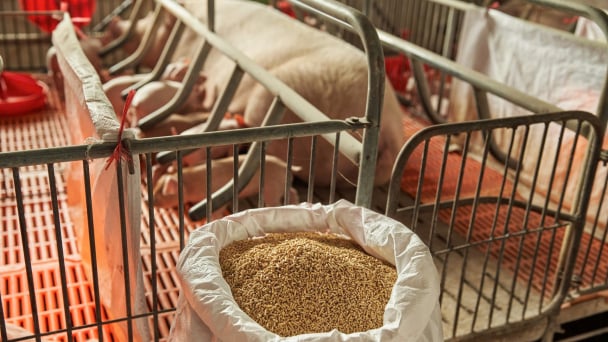
(VAN) CJ Feed&Care officially launched the FCR improvement campaign called “2025 Find Challenge Reach” in April 2025. In Vietnam, this campaign is implemented by CJ Vina Agri.
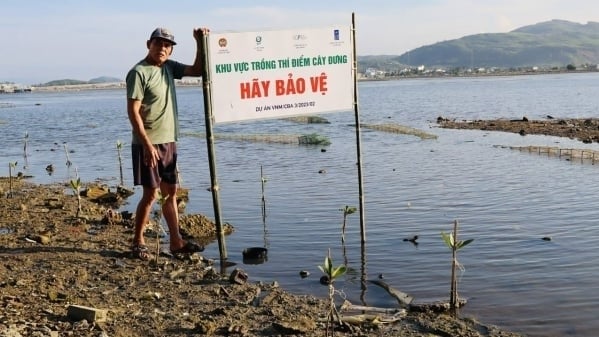
(VAN) The swamp in Pho Thanh is gradually being covered with red mangrove, creating a favorable environment for producing clean, high-quality salt.

(VAN) The trade turnover of agro-forestry-fishery products is growing significantly, along with investment cooperation commitments that are opening up new development directions between Vietnam and Russia.
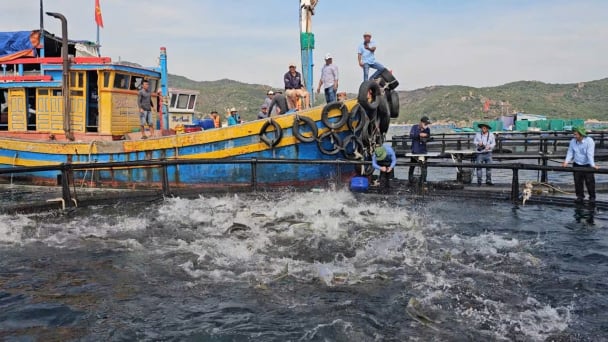
(VAN) Khanh Hoa is investing over 545 billion VND to develop 240 hectares of high-tech marine aquaculture in order to guarantee a consistent supply of seafood exports and achieve the USD 1 billion target.